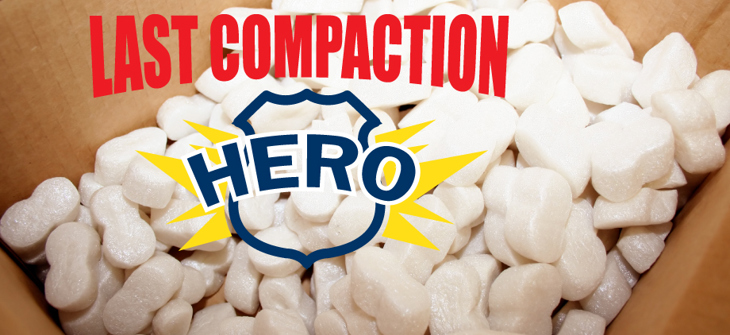
Last Compaction Hero
In the smash hit 1994 film, Ace Ventura: Pet Detective, Jim Carey disguises himself as a UPS man and commits egregious acts against humanity towards a benevolent package. He tosses it in the air, spins it around, runs it across a handrail, throws it behind his back, has it smashed against an elevator door, and kicks it down a hallway. Needless to say: whatever was in that package got damaged. If you’ve ever had to ship an item through the postal service, chances are you’ve placed Styrofoam around it, maybe utilized some of those foam peanuts, perhaps shoved some newspaper in there, or had some bubble wrap. It’s because you know there’s a good chance the package is going to receive a beating during its lifetime.
So, what’s Ace Ventura and packaging material have to do with corrugated metal pipe? A culvert is a buried structure, and its structural response works in conjunction with the surrounding soil. Most culverts will take multiple blows in their lifetime from repeated traffic loads, and they need adequate soil support. If the soil would collapse under the repeated pressure, then the pipe will be more susceptible to structural failure. Utilizing a properly compacted soil will help ensure that the culvert can safely endure the rigors of time.
“But Zach, If I have a soil with good engineering properties, can’t I just dump it and let it do its thing?” And the answer is usually a resounding “heck no” because if you just dump it, the soil will have a lot of air voids. Repeated traffic will consolidate the soil and cause it to settle over time.
And besides preventing settlement, it’s just good practice to make sure the soil particles are interlocked. Soil particles can move around due to natural forces such as rising ground water levels or freezing and thawing. Once your soil is jostled and starts moving around, you’re going to have less support. And if you have less than adequate support, your culvert is going to have a bad time.
But you can be the compaction hero that your culvert always knew that you were. Use a pole or timber with a tamping face or suitable power compactors to manually compact underneath the haunches with care. That will make the culvert feel nice and secure, especially if it’s a pipe-arch. Any backfill between corrugation valleys and areas immediately next to the pipe should be compacted with hand-operated methods. Avoid striking the structure with a power tamping tool. When the soil adjacent to the conduit is compacted to a minimum of 90% standard proctor density per AASHTO T-99, you may sleep easy at night knowing that you just made a world of difference in that culvert’s long life.
